Your cart is currently empty!
Month: July 2024
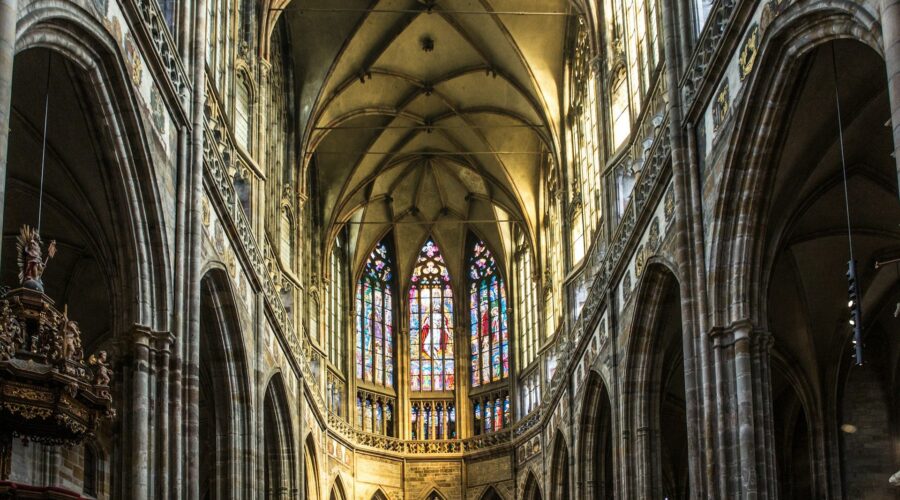
The Ultimate Guide to Nondenominational Churches: Finding a Spiritual Home for Everyone
What is a Nondenominational Church?
A nondenominational church is a Christian congregation that is not affiliated with any particular denomination or religious organization. Rather, it operates independently, establishing its own doctrine, practices, and structure.
Key Characteristics of Nondenominational Churches
Autonomy and Independence
- Nondenominational churches are not beholden to any external authority or hierarchy.
- They have the freedom to define their own beliefs, worship styles, and organizational structures.
Emphasis on the Bible
- Nondenominational churches typically adhere closely to the teachings of the Bible.
- They place a high value on personal interpretation and application of Scripture.
Contemporary Worship and Styles
- Many nondenominational churches adopt a more contemporary approach to worship and music.
- They may incorporate modern instrumentation, technology, and praise bands.
Focus on Practical Christianity
- Nondenominational churches often emphasize the practical aspects of the Christian faith.
- They may prioritize community outreach, service, and personal growth.
Benefits of Attending a Nondenominational Church
Freedom and Flexibility
- Nondenominational churches offer more freedom in terms of doctrine and worship styles.
- Individuals can choose a congregation that aligns with their personal beliefs and preferences.
Diversity of Beliefs and Cultures
- Nondenominational churches tend to attract a diverse range of people with different backgrounds and perspectives.
- This diversity fosters a welcoming and inclusive atmosphere.
Community and Support
- Nondenominational churches often prioritize building strong community ties.
- They provide opportunities for fellowship, support, and spiritual growth.
How to Find a Nondenominational Church
Online Directories
Local Search
- Search online for “nondenominational churches near me.”
- Check local newspapers, community bulletin boards, and social media groups.
Word of Mouth
- Ask friends, family, or colleagues for recommendations.
- Attend community events or gatherings where you may meet people from different churches.
Tips for Choosing a Nondenominational Church
Visit and Observe
- Attend several services at different churches to get a feel for their atmosphere and worship style.
- Observe the interactions between the pastor and congregation.
Review the Statement of Faith
- Ensure that the church’s beliefs align with your own religious convictions.
- Read the church’s mission statement and doctrinal statement to understand their core principles.
Get Involved
- Attend small groups or Bible studies to connect with other members.
- Volunteer or serve in the community to experience the practical side of the church’s mission.
Conclusion
Nondenominational churches offer a unique and welcoming spiritual experience for Christians seeking freedom, diversity, and community. By carefully considering the key characteristics and benefits of these churches, individuals can find a congregation that best aligns with their beliefs and aspirations.
Remember to use the tips provided in this guide to ensure that you make an informed decision when choosing a nondenominational church. May your search lead you to a spiritual home where you can grow in faith, connect with others, and make a positive impact on the world.
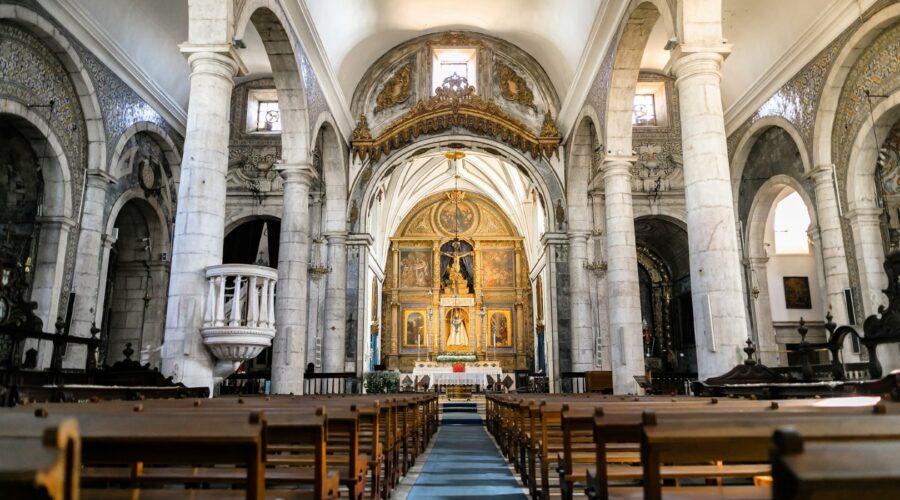
John the Baptist: The Forerunner of Christ
Introduction
John the Baptist, a enigmatic and influential figure, played a pivotal role in the history of Christianity. As the forerunner of Jesus Christ, he prepared the way for the Messiah’s arrival and proclaimed the coming of redemption. This comprehensive guide explores the life, teachings, and legacy of John the Baptist, shedding light on his significance in biblical and historical contexts.
Early Life and Ministry
- Lineage and Birth: John was born into a priestly family, with his father Zechariah serving as a priest in the Temple in Jerusalem. His mother Elizabeth was a descendant of Aaron, the brother of Moses.
- Birth Announcement: John’s birth was miraculously announced to Zechariah by the angel Gabriel while he was serving in the Temple. Elizabeth was barren and had passed the age of childbearing.
- Baptism and Wilderness Years: As an adult, John embarked on a ministry of baptism. He baptized people in the Jordan River, calling them to repentance and forgiveness of sins. He also spent significant time in the wilderness, living an ascetic life of prayer and meditation.
Prophecies and Preparation
- Fulfillment of Prophecy: John’s birth and ministry fulfilled several Old Testament prophecies about the coming of a messenger who would prepare the way for the Messiah. He was described as the “voice crying in the wilderness” (Isaiah 40:3).
- Preparing the Way: John’s baptism and preaching served as a catalyst for spiritual renewal and repentance. He urged people to turn away from their sins and prepare for the coming of the Messiah who would bring salvation.
- Elijah the Prophet: Jesus himself identified John as the prophesied return of Elijah the prophet. John’s fiery preaching, confrontational nature, and wilderness ministry paralleled Elijah’s life and ministry.
Meeting and Baptizing Jesus
- Recognition of Jesus: When Jesus came to be baptized by John, John initially hesitated due to Jesus’ sinless nature. However, Jesus insisted, and John recognized him as the long-awaited Messiah.
- Baptism of Jesus: As Jesus emerged from the waters, a dove descended from heaven and a voice proclaimed, “This is my beloved Son, in whom I am well pleased.” This marked the beginning of Jesus’ public ministry.
- Significance of the Baptism: Jesus’ baptism by John symbolized the transfer of authority and the commencement of the new covenant between God and humanity.
Imprisonment and Execution
- Confrontation with Herod: John’s outspoken criticism of Herod Antipas, the tetrarch of Galilee and Perea, for his adulterous relationship with Herodias, his brother Philip’s wife, led to his arrest.
- Imprisonment and Influence: John was imprisoned at the fortress of Machaerus in Jordan. Despite his confinement, his disciples continued to spread his message throughout the region.
- Execution: At a banquet held by Herod to celebrate his birthday, Salome, Herodias’ daughter, performed a dance that pleased him. As a reward, Salome requested to have John’s head brought to her on a platter. Herod reluctantly granted her wish.
Legacy and Significance
- Forerunner of Christ: John the Baptist’s primary legacy is his role as the forerunner of Jesus Christ. He paved the way for Jesus’ ministry, proclaiming his coming and calling people to repentance.
- Influence on Christianity: John’s teachings and martyrdom had a profound impact on the development of Christianity. His emphasis on repentance, baptism, and the coming of the Messiah became foundational beliefs of the Christian faith.
- Sainthood: Both the Catholic and Eastern Orthodox churches recognize John the Baptist as a saint. He is commemorated on June 24th, the traditional date of his martyrdom.
Additional Information
- John the Baptist in the Gospels: John the Baptist is prominently featured in all four Gospels (Matthew, Mark, Luke, and John), where his ministry and interaction with Jesus are recounted in detail.
- Archaeological Evidence: Several archaeological discoveries, including the site of Bethany beyond the Jordan where John is believed to have baptized Jesus, provide historical evidence supporting his existence and ministry.
- Related Figures: John the Baptist had a close relationship with his cousin, Jesus Christ, and encountered other biblical figures such as Herod Antipas, Salome, and the apostles.
Conclusion
John the Baptist stands as a pivotal figure in the biblical narrative, serving as the forerunner of Jesus Christ and the catalyst for spiritual renewal. His life and teachings played a crucial role in the establishment of Christianity, and his legacy continues to inspire and challenge believers today. John’s message of repentance, preparation, and the coming of salvation remains a timeless reminder of the transformative power of God’s grace.
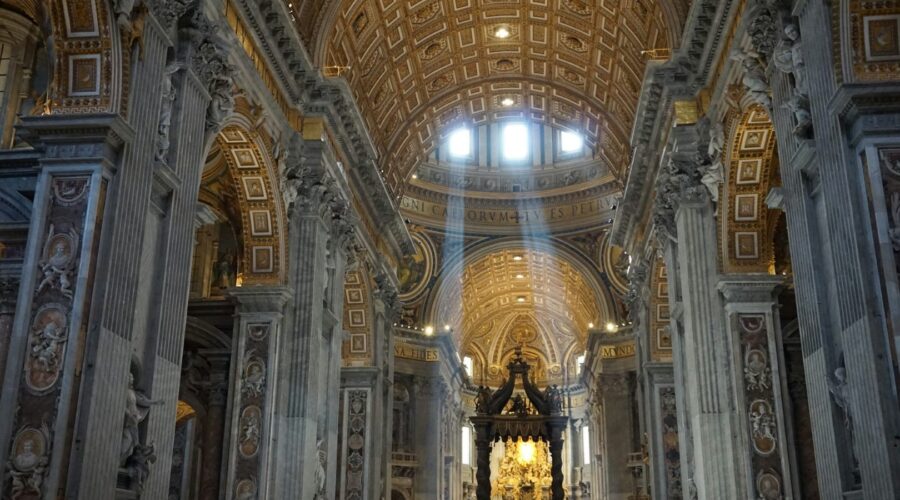
Our Lady of Peace: A Symbol of Hope and Devotion
Our Lady of Peace, also known as Our Lady of Lourdes, is a beloved Catholic figure who has been venerated for centuries. Her story is one of hope, healing, and the power of faith.
Origins of Our Lady of Peace
The origins of Our Lady of Peace can be traced back to 1858, when a young girl named Bernadette Soubirous claimed to have seen visions of a beautiful lady in a grotto near Lourdes, France. The lady identified herself as “the Immaculate Conception,” a title given to the Virgin Mary in Catholic tradition. Bernadette’s visions occurred over a period of several months, attracting thousands of pilgrims to Lourdes.
The Grotto and the Spring
The grotto where Bernadette had her visions became a sacred site known as the Sanctuaire Notre-Dame de Lourdes. Within the grotto is a spring, which has been said to possess miraculous healing properties. The spring’s water has been bottled and used by pilgrims for centuries to seek healing and spiritual renewal.
The Miraculous Cures
Throughout history, numerous miracles have been attributed to the intercession of Our Lady of Peace. Many pilgrims who have visited Lourdes have reported experiencing physical and spiritual healings, often after drinking the water from the spring. These miraculous cures have led to Lourdes becoming one of the most popular pilgrimage sites in the world.
The Symbolism of Our Lady of Peace
Our Lady of Peace is often depicted as a young, beautiful woman with long flowing hair and a blue robe. She holds a rosary in one hand and a white lily in the other. The lily symbolizes purity and innocence, while the rosary represents prayer and devotion.
The blue color of her robe is associated with the Immaculate Conception and with Mary’s role as the mother of Jesus. The white color of her veil symbolizes her purity and her role as the advocate for all who seek her intercession.
Devotion to Our Lady of Peace
Devotion to Our Lady of Peace is widespread throughout the Catholic Church. She is particularly venerated in France, where the town of Lourdes is a major pilgrimage destination. Many churches and cathedrals around the world are dedicated to her, and her feast day is celebrated on February 11.
Prayer to Our Lady of Peace
O Our Lady of Peace, help us to find peace in our hearts and in the world. Give us strength in times of trouble, and comfort us in our sorrows. Intercede for us before God, and ask for his guidance and protection. Amen.
Conclusion
Our Lady of Peace is a powerful symbol of hope and healing. Her story reminds us of the importance of faith, the power of prayer, and the love of God. Whether we visit Lourdes as pilgrims or pray to her from afar, Our Lady of Peace continues to inspire and guide us on our spiritual journeys.
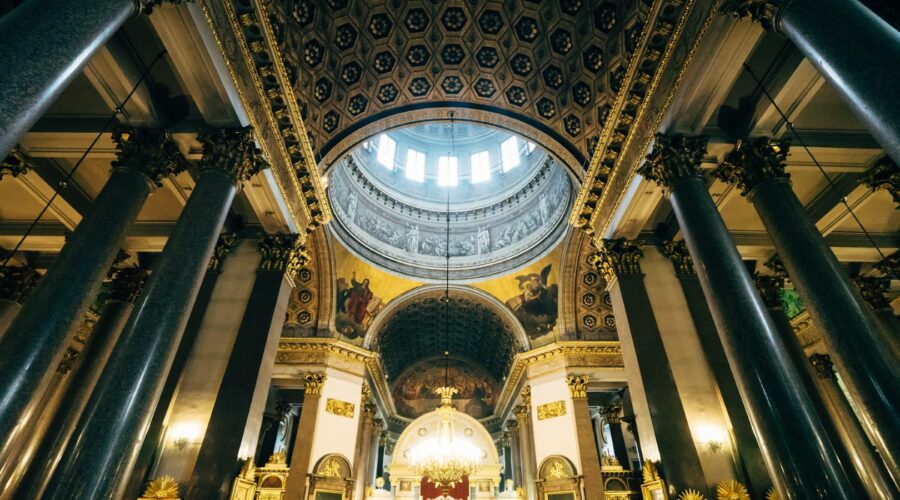
Discover the Southern Baptist Churches: A Comprehensive Guide
Introduction
Southern Baptist churches form a significant part of the American religious landscape, with over 47,000 congregations and 14 million members across the country. Known for their conservative theological views and involvement in social and political issues, understanding these churches provides valuable insights into the complexities of modern-day Christianity.
Historical Foundations
Origins and Antebellum Era (1845-1861)
The Southern Baptist Convention (SBC) was formed in 1845 following a dispute over slavery within the Baptist General Convention. Southern Baptists, predominantly endorsing a pro-slavery stance, established the SBC as an independent organization. During the antebellum era, the SBC experienced rapid growth and played a pivotal role in shaping Southern religious and social norms.
Civil War and Reconstruction (1861-1877)
The Civil War had a profound impact on Southern Baptist churches. Many congregations split along regional lines, with churches in the Confederacy forming the Confederate Baptist Convention. The post-war Reconstruction era saw the SBC reunite and engage in efforts to provide aid and rebuild churches in the devastated South.
Progressive Era (1877-1917)
The Progressive Era witnessed significant theological shifts within the SBC. The rise of liberal theology challenged conservative doctrines, leading to debates over the inerrancy of Scripture and the role of science in faith. This period also saw the emergence of new social movements, such as the Social Gospel, which influenced the SBC’s stance on social issues.
Theology and Beliefs
Doctrinal Statements
Southern Baptist churches subscribe to a set of doctrinal statements, including the Baptist Faith and Message and the SBC Constitution. These documents outline the core beliefs of the SBC, emphasizing:
- The Bible as the sole authority for faith and practice
- The belief in the Trinity
- The salvation through faith in Jesus Christ
- The priesthood of all believers
- The autonomy of local churches
Distinctive Beliefs
Southern Baptists hold certain distinctive beliefs that differentiate them from other Baptist denominations:
- Biblical Inerrancy: The belief that the Bible is without error in its original manuscripts.
- Complementarianism: The belief that men and women have distinct roles in the church and society.
- Calvary Chapel Worship: A style of worship that emphasizes contemporary music and a casual atmosphere.
- Great Commission Resurgence: A recent movement within the SBC that prioritizes evangelism and church planting.
Governance and Organization
Local Churches
Southern Baptist churches are autonomous, with each congregation having the authority to govern itself. Local churches are led by a pastor, who is typically ordained by the SBC, and a deacon board, elected by the congregation.
State Conventions
Local churches are affiliated with state conventions, which provide support and coordination for churches within their respective states. State conventions play a role in missions, evangelism, and theological education.
National Convention
The Southern Baptist Convention is the highest governing body of Southern Baptist churches. The SBC meets annually and elects officers, including a president, who serves as the spokesperson for the convention. The SBC also sets policies and issues resolutions on various matters of faith and practice.
Activities and Ministries
Evangelism and Missions
Southern Baptist churches are actively involved in evangelism and missions. The SBC supports missionaries and mission organizations around the world. The SBC also operates various evangelistic programs, such as the North American Mission Board and the International Mission Board.
Education
Southern Baptists place a high value on education. The SBC operates various seminaries and colleges, including Southwestern Baptist Theological Seminary and Southeastern Baptist Theological Seminary. These institutions provide theological training for pastors and other church leaders.
Social Outreach
Southern Baptist churches are involved in various social outreach programs. They often partner with local organizations to provide food, shelter, and other forms of assistance to those in need. The SBC also supports disaster relief efforts through the North American Mission Board.
Impact and Influence
Cultural and Social Influence
Southern Baptist churches have had a significant cultural and social influence in the United States. They have played a role in shaping the political landscape, particularly in the Southern states. Southern Baptist pastors and leaders have often been vocal on social and moral issues, such as abortion and same-sex marriage.
Contributions to American Society
Southern Baptist churches have made numerous contributions to American society, including:
- Establishing hospitals, orphanages, and other social welfare institutions
- Providing financial support for education and research
- Promoting religious freedom and social justice
Challenges and Controversies
While Southern Baptist churches have a long history of service and impact, they have also faced challenges and controversies. These include:
- Racial Reconciliation: The SBC has grappled with issues related to race and slavery throughout its history. Recent years have seen an increased focus on racial reconciliation and addressing the legacy of racism within the convention.
- Sexual Abuse Scandal: In 2019, a report revealed a widespread sexual abuse crisis within the SBC. The convention has since taken steps to address this issue and implement measures to prevent abuse.
- Political Involvement: Southern Baptist leaders have often been involved in political debates, particularly on issues related to social conservatism. This involvement has raised concerns about the separation of church and state.
Recent Developments and Future Outlook
Current Trends
Southern Baptist churches are currently experiencing several trends, including:
- Church Planting: The SBC is emphasizing church planting as a way to reach new people and grow the convention.
- Youth Engagement: Southern Baptist churches are making efforts to engage younger generations and attract them to church.
- Online Ministries: Southern Baptist churches are increasingly utilizing online platforms for worship, evangelism, and education.
Future Outlook
The future of Southern Baptist churches remains uncertain. While the convention has faced challenges, it also has a strong legacy and a commitment to its core beliefs. The SBC’s ability to address current issues and adapt to changing societal norms will likely shape its future trajectory.
Conclusion
Southern Baptist churches are a diverse and influential force in American Christianity. Their distinctive beliefs, governance structure, and activities have shaped the religious landscape of the United States. While the SBC has faced challenges, it continues to play a significant role in evangelism, education, and social outreach. Understanding the history, theology, and current trends of Southern Baptist churches provides valuable insights into the complexities and vitality of religious life in America.
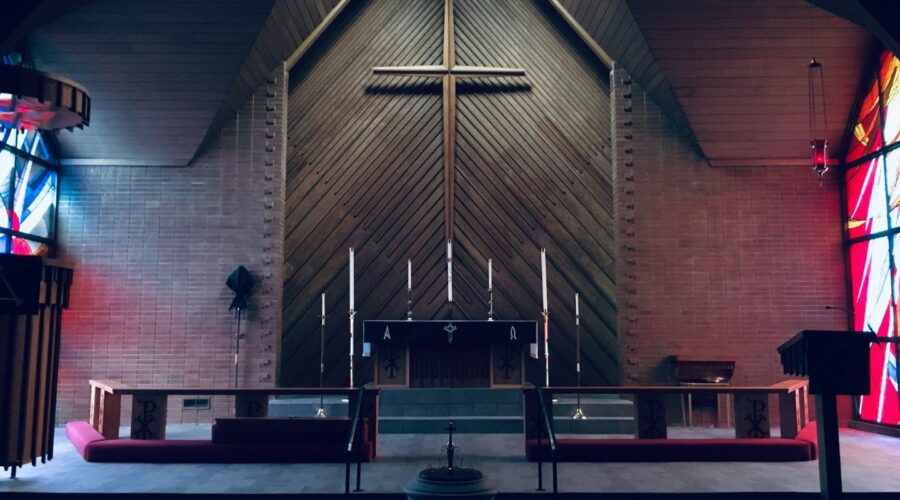
Experience the Power of Faith and Inspiration: Joel Osteen Live
Introduction
In the realm of Christian ministry, Joel Osteen stands as a beacon of hope and inspiration for millions worldwide. His renowned “Joel Osteen Live” broadcasts reach far beyond his home church, Lakewood Church in Houston, Texas, connecting countless hearts with uplifting messages of faith and personal growth.
About Joel Osteen
Early Life and Ministry
Joel Osteen is a native of Houston who initially pursued a career in television production. However, following the untimely passing of his father, Pastor John Osteen, in 1999, Joel stepped into the pulpit of Lakewood Church, then a small congregation of around 6,000. Under his leadership, the church has grown exponentially, becoming one of the largest and most influential megachurches in the world.
Philosophy and Beliefs
Osteen’s teachings are centered around the belief that God’s love and grace are available to all who seek it. He emphasizes the importance of a positive mindset, forgiveness, and faith in one’s own potential. Osteen’s messages aim to inspire individuals to live abundant and purposeful lives.
“Joel Osteen Live” Broadcast
Format and Content
“Joel Osteen Live” is a weekly broadcast that airs on various television networks and online platforms. The program typically begins with a lively worship session, led by talented musicians and singers. Osteen then delivers a sermon, focusing on themes such as hope, faith, relationships, and personal growth. The broadcast concludes with a time of prayer and inspirational music.
Impact and Reach
Since its inception, “Joel Osteen Live” has become a global phenomenon. It reaches an estimated audience of over 100 million people in over 100 countries. Osteen’s messages have resonated with individuals from diverse backgrounds, offering comfort, guidance, and encouragement.
Special Events and Services
Conferences and Events
In addition to his weekly broadcast, Joel Osteen hosts various conferences and events throughout the year. These gatherings provide attendees with an opportunity to hear Osteen’s teachings in person, engage in workshops, and connect with fellow believers.
Community Outreach
Lakewood Church is actively involved in community outreach programs, including feeding the hungry, providing disaster relief, and supporting educational initiatives. Osteen is committed to making a positive impact on the lives of others, both within his own community and beyond.
Tips for Attending a “Joel Osteen Live” Event
Finding a Venue
To attend a “Joel Osteen Live” event, visit the official website for a list of upcoming dates and locations. Select a venue that is convenient for you and purchase tickets in advance.
Planning Your Visit
Arrive early to secure a seat and allow ample time for parking. Dress comfortably and be prepared for a lively and inspiring experience. Bring a notebook or journal to capture any meaningful insights.
During the Event
Engage fully in the worship and message. Take notes of any key points that resonate with you. Participate in the time of prayer and allow yourself to be uplifted by the uplifting music.
Follow-Up
After attending a “Joel Osteen Live” event, take time to reflect on the messages you received. Consider how you can apply the teachings to your own life and relationships. Share your experience with others and encourage them to join you at future events.
Benefits of Attending “Joel Osteen Live”
Attending a “Joel Osteen Live” event offers numerous benefits, including:
- Inspiration and Upliftment: Osteen’s messages are designed to inspire, motivate, and uplift your spirit.
- Personal Growth: The teachings provide practical guidance for personal growth and transformation.
- Connection with Others: Events foster a sense of community and allow you to connect with other like-minded individuals.
- Strengthened Faith: Osteen’s emphasis on faith can help deepen your connection with God.
- Renewed Perspective: The messages offer a fresh perspective on life’s challenges and opportunities.
Conclusion
“Joel Osteen Live” is an extraordinary opportunity to experience the transformative power of faith and inspiration. Whether you watch the broadcast from home or attend an event in person, you will be met with messages of hope, encouragement, and guidance. Joel Osteen’s teachings have impacted countless lives, fostering personal growth, strengthening faith, and inspiring individuals to live abundant and purposeful lives.
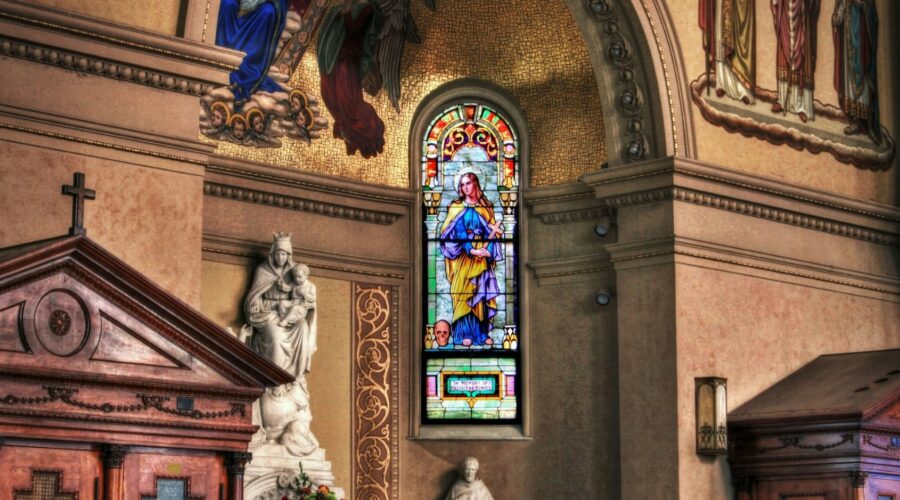
Hope City Church: A Comprehensive Guide for Seekers, Believers, and Community Builders
Introduction
Hope City Church, a vibrant and growing Christian community, has been a beacon of hope and transformation in the city for over two decades. With its diverse congregation, engaging worship services, and impactful ministries, Hope City Church offers a welcoming and supportive environment for individuals of all backgrounds to connect with God, grow in their faith, and make a positive impact on the community.
Mission and Vision
Hope City Church’s mission is “to make Jesus Christ known in our city and beyond.” Its vision is to create a church that is “a place where people can connect with God, find hope, and make a difference in the world.”
Locations and Services
Hope City Church has multiple locations across the city, including:
– Downtown Campus: 123 Main Street
– North Campus: 456 Elm Street
– West Campus: 789 Oak StreetEach campus offers a variety of worship services on Sundays, including traditional and contemporary services. Additionally, the church hosts various weekday programs, Bible studies, and community events.
Ministries and Groups
Hope City Church offers a wide range of ministries and groups to cater to the diverse needs of its congregation, including:
– Hope Kids:
Children’s ministry program designed to nurture the faith and spiritual growth of children.
– Hope Youth:
Youth ministry program that provides a safe and engaging environment for teenagers to connect with God, explore their faith, and build friendships.
– Hope Care:
Ministry that provides support and resources to individuals and families facing challenges such as poverty, addiction, and mental health issues.
– Hope Serve:
Outreach program that organizes volunteer opportunities and community service projects.
– Hope Connect:
Small group gatherings where individuals can connect with others, share their experiences, and grow in their faith.
Leadership
Hope City Church is led by a team of experienced pastors and leaders, including:
– Senior Pastor John Smith
– Associate Pastor Mary Jones
– Youth Pastor David Lee
– Worship Pastor Michael DavisThe leadership team is committed to creating a Christ-centered environment where individuals can thrive spiritually and make a positive impact on the community.
Community Impact
Hope City Church recognizes the importance of reaching beyond its walls and making a tangible difference in the surrounding community. Through its various outreach programs, the church actively serves the city in the following ways:
– Running a homeless shelter and soup kitchen
– Providing free after-school tutoring and mentorship programs for underprivileged youth
– Partnering with local organizations to address issues such as hunger, homelessness, and addiction
– Hosting community events and festivals to foster unity and celebrate diversityConclusion
Hope City Church is a vibrant and growing community that offers a welcoming and supportive environment for individuals seeking hope, growth, and a sense of purpose. Through its engaging worship services, diverse ministries, and impactful community outreach programs, the church strives to make a positive difference in the lives of individuals and the community at large. Whether you are seeking a deeper connection with God, looking to grow in your faith, or simply seeking a sense of belonging, Hope City Church is a place where you can find hope, hope, and make a meaningful contribution to the world.
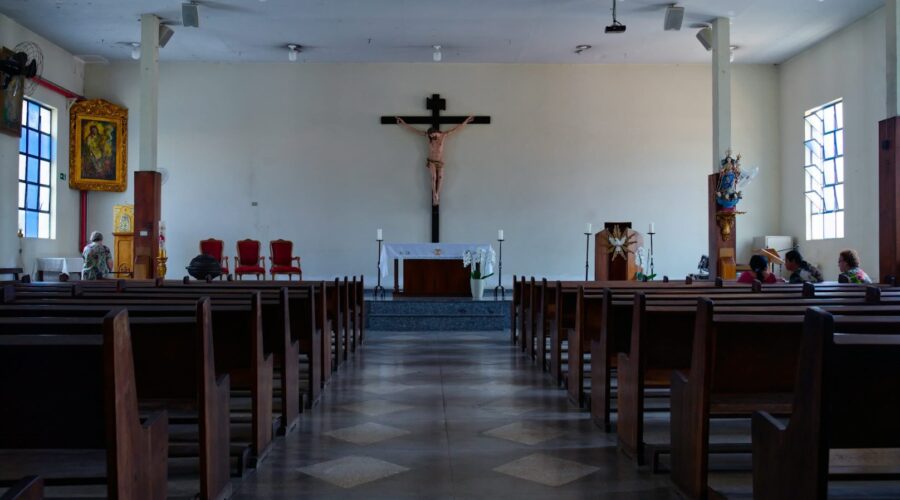
Sagrada Família: A History, Architectural Masterpiece, and Symbol of Barcelona
Introduction
The Sagrada Família, an awe-inspiring basilica in Barcelona, Spain, is a testament to the genius of Antoni Gaudí, one of the most visionary architects of all time. A UNESCO World Heritage Site, the Sagrada Família is a living work of art that has captivated the imagination of millions worldwide. In this comprehensive guide, we delve into the history, architectural wonders, and significance of this iconic masterpiece.
A Brief History
The construction of the Sagrada Família began in 1882 under the direction of architect Francesc del Villar. However, in 1883, Gaudí took over the project and dedicated the rest of his life to its completion. Gaudí’s unique vision transformed the design from a Gothic Revival concept into a groundbreaking masterpiece that blended nature, religion, and art.
After Gaudí’s tragic death in 1926, a team of architects continued his legacy, ensuring the basilica’s eventual completion. The Sagrada Família is still under construction today, with an estimated completion date of 2026, coinciding with the centennial of Gaudí’s death.
Architectural Wonders
The Sagrada Família is renowned for its intricate and innovative architecture that defies conventional styles. Here are some of its most remarkable features:
- Hyperboloid Columns: The interior supports an array of towering hyperboloid columns that resemble ancient trees, creating a sense of awe-inspiring grandeur.
- Nativity Façade: The east-facing façade, adorned with intricate carvings depicting the birth and childhood of Jesus, showcases Gaudí’s mastery of naturalism.
- Passion Façade: Completed after Gaudí’s death, the Passion Façade depicts the final hours of Jesus’ life and reflects the architect’s more abstract and expressive style.
- Glory Façade: The unfinished west-facing façade is dedicated to Jesus’ resurrection and eternal glory. It will feature a towering central tower and serve as the main entrance.
- Stained Glass Windows: The Sagrada Família’s colorful stained glass windows create a kaleidoscopic effect, filtering natural light to illuminate the interior with ethereal beauty.
Symbolism and Meaning
Beyond its architectural brilliance, the Sagrada Família holds profound religious symbolism. Its design is rooted in Gaudí’s deep faith and his desire to create a basilica that would inspire and uplift the spirit.
- The Cross: The tallest tower, dedicated to Jesus Christ, culminates in a massive cross, visible throughout Barcelona, symbolizing the Christian faith.
- The Evangelists: The four large towers flanking the crossing represent the four evangelists: Matthew, Mark, Luke, and John.
- The Tree of Life: The central nave is shaped like a forest with intertwining branches, representing the tree of life and the interconnectedness of all living things.
- Sacred Geometry: Gaudí employed sacred geometry throughout the basilica, incorporating shapes and numbers believed to possess spiritual significance.
Visiting the Sagrada Família
Experiencing the Sagrada Família firsthand is a truly unforgettable experience. Here are some tips for planning your visit:
- Book Tickets in Advance: Tickets are in high demand, so it’s essential to book your timed entry tickets well in advance, especially during peak season.
- Guided Tours: Enhance your visit with a guided tour led by knowledgeable experts who can share fascinating insights into Gaudí’s vision and the basilica’s construction.
- Photography: Capture the basilica’s beauty through photography, but be mindful of the rules and restrictions in place.
- Visit at Different Times: Explore the Sagrada Família at different times of the day to appreciate its changing light and atmosphere. Dawn and dusk offer particularly stunning views.
Conclusion
The Sagrada Família is more than just a basilica; it is a masterpiece of art, architecture, and spirituality. Through its intricate design and profound symbolism, Gaudí created a living testament to his unwavering faith and boundless imagination. As the construction nears completion, the Sagrada Família remains a symbol of Barcelona, inspiring awe and wonder in all who behold its grandeur.
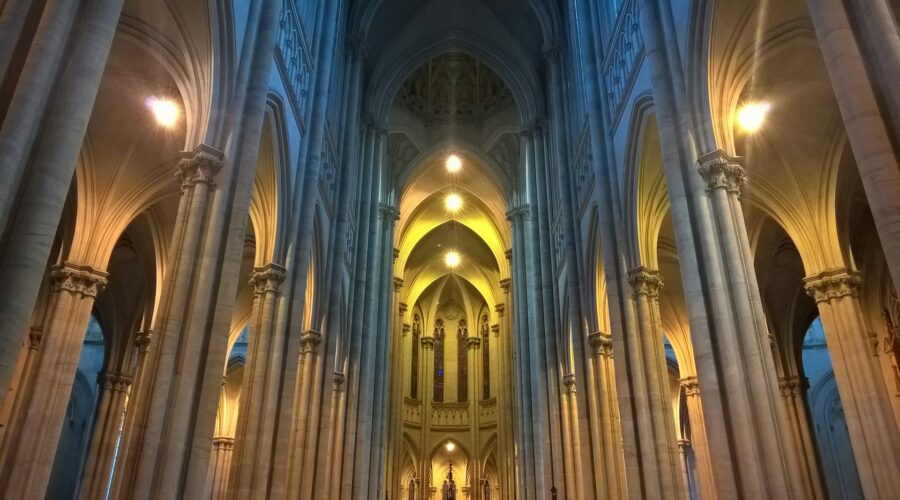
Aldersgate: Unlocking the Spiritual Awakening of John Wesley
A Journey of Discovery
On May 24th, 1738, the life of John Wesley, an Anglican priest, was forever transformed. As he sat in Aldersgate Street, London, a phrase from Martin Luther’s preface to his Commentary on Romans pierced his heart: “Justified by faith alone.” In that extraordinary moment, Wesley experienced a profound spiritual awakening that would ignite a religious revival throughout Britain and beyond.
Aldersgate: The Historical Context
The Heart of Methodism
Aldersgate Street was a significant meeting place for Methodist societies, groups of like-minded individuals who sought to deepen their faith. John Wesley himself preached many sermons at the Aldersgate Society, which became a hub for the Methodist movement.
A Thriving Spiritual Center
In the 18th century, Aldersgate was a vibrant center of religious activity. Various denominations, including Moravians, Anglicans, and Presbyterians, held meetings and established chapels in the area.
The Great Awakening
A Global Movement
Wesley’s Aldersgate experience sparked a spiritual awakening known as the Great Awakening. This religious revival swept across Britain and the American colonies, inspiring countless people to embrace a personal relationship with Jesus Christ.
Transforming Lives and Communities
The Great Awakening had a profound impact on society. It led to the establishment of new churches, educational institutions, and social reforms. It also fostered a spirit of evangelism and mission, resulting in the spread of Christianity to distant lands.
John Wesley’s Spiritual Journey
A Man in Search of Meaning
Before his Aldersgate experience, Wesley had been plagued by feelings of guilt and a sense of unworthiness. He diligently followed religious practices but found no true peace or assurance of salvation.
A Restless Heart
Wesley traveled extensively, seeking spiritual guidance and insight. He met with Moravian Christians in Germany who emphasized the importance of a living faith and inward assurance of God’s grace.
The Aldersgate Awakening
On that fateful evening at Aldersgate, as Wesley listened to the words of Martin Luther, he felt a profound transformation. He realized that he was justified by faith alone, apart from any human merit or good works.
The Legacy of Aldersgate
A Lasting Impact
The Aldersgate experience had a lasting impact on Wesley’s life and ministry. He became a renowned preacher and evangelist, traveling thousands of miles and delivering countless sermons that awakened thousands to their need for salvation.
The Wesleyan Revival
Wesley’s Aldersgate awakening inspired the Wesleyan Revival, a spiritual renewal movement within the Church of England. It emphasized the importance of personal conversion, holiness of life, and active evangelism.
Methodist Denominations
Wesley’s followers established Methodist denominations around the world, including the Methodist Church in Britain, the United Methodist Church in the United States, and the African Methodist Episcopal Church.
Aldersgate Today
A Place of Pilgrimage
Aldersgate today is a place of pilgrimage for Methodists and Christians from all denominations. It is a reminder of the profound spiritual awakening that took place there and continues to inspire people to seek a deeper relationship with God.
Aldersgate Chapel
Located on the site of the original Aldersgate Society, Aldersgate Chapel is a Methodist church that preserves the legacy of John Wesley and the Aldersgate experience. It offers worship services, educational programs, and opportunities for spiritual growth.
Conclusion
The Aldersgate experience was a pivotal moment in the life of John Wesley and had a profound impact on the history of Christianity. It ignited a spiritual awakening that transformed individuals, communities, and nations. Aldersgate remains a symbol of hope and a reminder of the transformative power of faith.
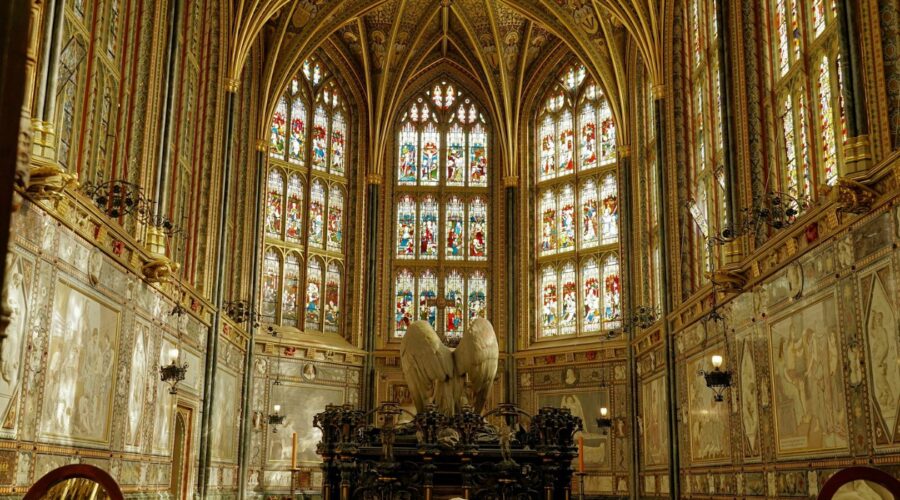
Crossroads Community Church: A Guide to its Mission, Beliefs, and Programs
Introduction
Crossroads Community Church is a thriving evangelical church located in the heart of the Midwest. Founded in 1995, the church has since grown to become a vibrant and influential part of the community. With its strong emphasis on biblical teaching, compassionate outreach, and vibrant worship, Crossroads has become a beacon of hope and transformation for thousands.
Mission and Beliefs
Crossroads Community Church is guided by a clear mission: “To love God, love people, and make disciples.”
Core Beliefs:
- The Bible is the inspired and inerrant Word of God.
- Jesus Christ is the eternal Son of God, who came to earth to die for our sins and offer us eternal life.
- The Holy Spirit indwells believers, empowering them to live a life of holiness and service.
- The Church is the body of Christ, called to reach out to the world with the Gospel.
Worship Services
Crossroads offers vibrant worship services that are designed to connect people with God and inspire them to grow in their faith. The services feature contemporary music, dynamic preaching, and opportunities for prayer and reflection.
Service Times:
Sunday Wednesday 9:00 AM, 10:45 AM, 12:30 PM 7:00 PM Outreach and Ministries
Crossroads Community Church is deeply committed to reaching out to the community and making a positive impact. The church offers a wide range of programs and ministries that serve people of all ages and backgrounds.
Key Programs:
- Bible Studies and Small Groups
- Community Service
- Children’s and Youth Programs
- Prayer and Healing Ministry
Membership and Discipleship
Becoming a member of Crossroads Community Church is a meaningful step for those who want to grow in their faith and connect with a supportive community. The church offers a comprehensive discipleship program that helps members understand the teachings of the Bible and apply them to their lives.
Steps to Membership:
- Attend a membership class
- Complete a membership application
- Be interviewed by a pastor
- Affirm the church’s core beliefs
- Participate in a covenant ceremony
Location and Contact
Address:
123 Main Street, Anytown, CA 12345
Contact Information:
- Phone: (555) 555-1212
- Email: [email protected]
- Website
Conclusion
Crossroads Community Church is a dynamic and growing church that is impacting the lives of thousands in the Midwest and beyond. With its unwavering commitment to biblical truth, compassionate outreach, and vibrant worship, Crossroads is a beacon of hope and transformation for all who seek a deeper connection with God and a fulfilling life.
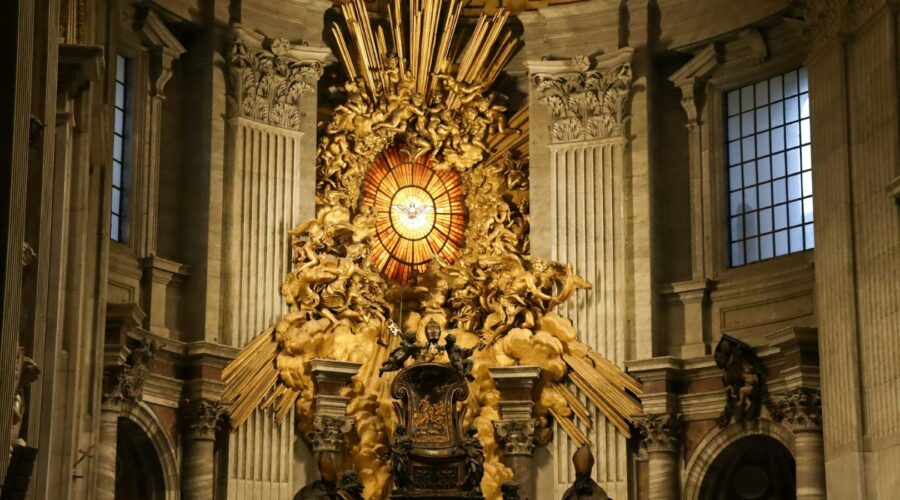
Empowering Families through Family Worship Centers: A Comprehensive Guide
What is a Family Worship Center?
A Family Worship Center is a designated space within a church or religious organization that caters specifically to families and serves as a gathering place for worship, fellowship, and spiritual growth. These centers offer a range of activities and programs designed to strengthen family bonds, foster spiritual development, and provide support to families throughout their journey.
Key Elements of Family Worship Centers
1. Worship and Prayer
Family Worship Centers provide designated areas for families to worship together through song, prayer, and Bible study. These gatherings are often tailored to engage both children and adults, creating a meaningful and immersive worship experience.
2. Education and Discipleship
The centers offer age-appropriate educational programs for children, teens, and adults. These programs focus on spiritual formation, biblical teachings, and moral development, helping families navigate the complexities of daily life and grow in their faith.
3. Fellowship and Support
Family Worship Centers facilitate regular gatherings and activities that foster fellowship and support among families. These may include potlucks, game nights, support groups, and community outreach initiatives, providing opportunities for families to connect and build relationships.
4. Counseling and Resources
Many Family Worship Centers offer counseling services and resources for families facing challenges or seeking guidance. These services can include marriage counseling, parenting support, and financial assistance, empowering families to overcome obstacles and thrive.
Benefits of Family Worship Centers
Attending a Family Worship Center can provide numerous benefits for families, including:
1. Strengthened Family Bonds
Regular participation in worship, fellowship, and activities helps families forge deeper connections and create lasting memories.
2. Enhanced Spiritual Growth
Centers provide age-specific programs that nurture spiritual development and foster a love for God and His Word in children and adults alike.
3. Support and Encouragement
Surrounding families with a community of faith provides support, encouragement, and a sense of belonging during challenging times.
4. Fostering a Biblical Worldview
Centers provide a platform for families to learn and apply biblical principles to their everyday lives, equipping them to navigate the complexities of modern society.
5. Intergenerational Connection
Family Worship Centers bridge generations, allowing children, teens, adults, and seniors to worship, learn, and grow together, fostering intergenerational relationships.
How to Choose a Family Worship Center
Selecting a Family Worship Center that aligns with your family’s needs is essential. Consider the following factors:
1. Theological Fit
Ensure the center’s theological beliefs align with your own. This includes their stance on essential doctrines and practices.
2. Age-Appropriate Programs
Check if the center offers programs and activities tailored to the ages of your children and family members.
3. Community Involvement
Inquire about the center’s involvement in the community and its commitment to outreach and service.
4. Leadership and Staff
Meet the pastors or leaders and staff to assess their qualifications, experience, and passion for serving families.
5. Worship Style and Atmosphere
Visit the center to experience their worship style and observe the overall atmosphere. Ensure it resonates with your family’s preferences.
Tips for Effective Family Worship
To maximize the benefits of Family Worship Centers, consider these tips:
1. Make it a Priority
Establish regular attendance at worship services and activities as a family.
2. Engage in Family Devotion
Set aside time for Bible study and prayer as a family, reinforcing the lessons learned at the center.
3. Seek Support and Accountability
Connect with other families and leaders within the center for support and encouragement in your spiritual journey.
4. Utilize Resources
Take advantage of the educational materials, counseling services, and support groups offered by the center.
5. Lead by Example
Parents should model a life of faith and devotion, inspiring their children to follow their example.
Conclusion
Family Worship Centers play a vital role in nurturing spiritual growth, strengthening family bonds, and providing support to families. By choosing a center that aligns with your values and implementing these tips, you can harness the transformative power of family worship and foster a thriving, faith-filled family.
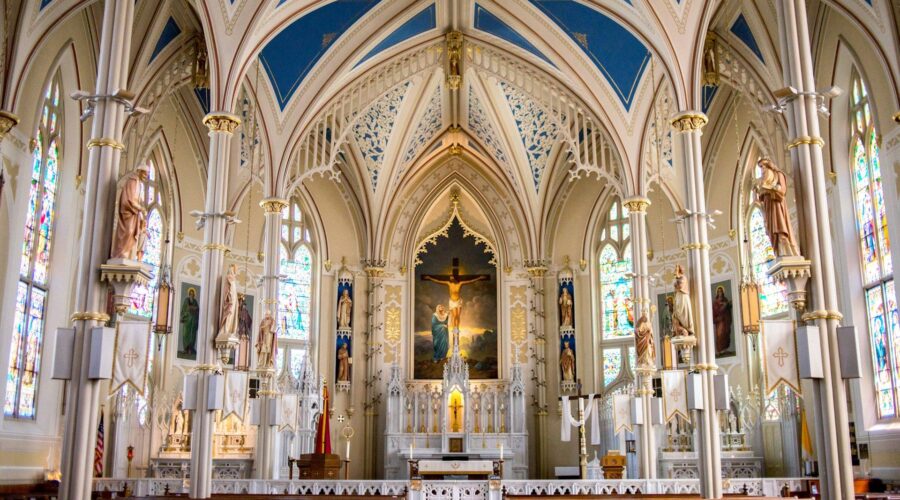
Unveiling the Catholic Catechism: A Comprehensive Guide
1. Introduction
The Catholic Catechism is a compendium of the Catholic Church’s official teachings on faith, morals, and the sacraments. It is a valuable resource for understanding the beliefs and practices of the Catholic Church.
a. Purpose and Authorship
The Catechism was commissioned by Pope John Paul II and composed by a commission of theologians. Its purpose is to provide a comprehensive and authoritative account of Catholic doctrine.
b. Structure and Content
The Catechism is organized into four parts:
*
- The Profession of Faith
- The Celebration of the Christian Mystery
- Life in Christ
- Christian Prayer
These parts cover a wide range of topics, including:
- The creed
- The sacraments
- The moral life
- Prayer
- The role of the Church
2. The Creed
The Creed is a statement of the basic beliefs of the Catholic Church. It is recited at Mass and other liturgical celebrations.
a. The Nicene Creed
The Nicene Creed is the most widely used creed in the Catholic Church. It was formulated at the Council of Nicaea in 325 A.D. to combat the heresy of Arianism.
b. The Apostles’ Creed
The Apostles’ Creed is a shorter creed that is also used in the Catholic Church. It is believed to have been written by the apostles in the first century A.D.
3. The Sacraments
Sacraments are visible signs of invisible graces. They are instituted by Christ to communicate his life to us.
a. Number and Names
The Catholic Church recognizes seven sacraments:
*
- Baptism
- Confirmation
- Eucharist
- Reconciliation
- Anointing of the Sick
- Holy Orders
- Matrimony
b. Effects and Importance
Each sacrament has a specific effect and importance. For example, Baptism cleanses us from sin and makes us members of the Church. Confirmation seals us with the Holy Spirit and strengthens us in our faith. Eucharist gives us nourishment for our spiritual life.
4. The Moral Life
The moral life is an essential part of the Christian life. It is based on the Ten Commandments and the teachings of Jesus Christ.
a. The Ten Commandments
The Ten Commandments are God’s moral law for his people. They are:
*
- I am the Lord your God. You shall have no other gods before me.
- You shall not make for yourself an image in the form of anything in heaven above or on the earth beneath or in the waters below.
- You shall not misuse the name of the Lord your God.
- Remember the Sabbath day by keeping it holy.
- Honor your father and your mother.
- You shall not murder.
- You shall not commit adultery.
- You shall not steal.
- You shall not give false testimony against your neighbor.
- You shall not covet your neighbor’s house. You shall not covet your neighbor’s wife, or his male or female servant, his ox or donkey, or anything that belongs to your neighbor.
b. Christian Ethics
Christian ethics is based on the teachings of Jesus Christ. Jesus taught us to love God and love our neighbor. He also taught us to forgive our enemies and to pray for those who persecute us.
5. Prayer
Prayer is an essential part of the Christian life. It is a way of communicating with God and expressing our love and gratitude to him.
a. Types of Prayer
There are many different types of prayer, including:
*
- Meditation
- Contemplation
- Petition
- Intercession
- Praise
- Thanksgiving
b. The Importance of Prayer
Prayer is an important way to connect with God and grow in our faith. It can also help us to cope with stress, overcome challenges, and find peace.
6. Conclusion
The Catholic Catechism is an invaluable resource for understanding the Catholic faith. It provides a comprehensive and authoritative account of Catholic doctrine. The Catechism can help you to deepen your understanding of the Catholic faith and to live a more fulfilling Christian life.
Additional Resources
* Catechism of the Catholic Church
* United States Conference of Catholic Bishops: Catechism of the Catholic Church
Real Life Church: A Guide to Authentic Christian Community
What is a Real Life Church?
A real life church is a community of believers who are committed to following Jesus Christ and living out their faith in the real world. It is a place where people can come to worship God, learn about the Bible, and connect with other Christians. Real life churches are not perfect, but they are striving to be a reflection of the Kingdom of God on earth.
Characteristics of a Real Life Church
- Authenticity: Real life churches are not trying to be something they are not. They are honest about their struggles and imperfections, and they are committed to growing in their faith.
- Community: Real life churches are places where people can feel connected to others. They are intentional about creating opportunities for fellowship and support.
- Discipleship: Real life churches are committed to helping their members grow in their faith. They offer a variety of opportunities for Bible study, discipleship groups, and other learning experiences.
- Service: Real life churches are not content to sit back and wait for people to come to them. They are active in their communities, serving others in need.
Finding a Real Life Church
If you are looking for a real life church, there are a few things you can do:
- Visit different churches: The best way to find a church that is a good fit for you is to visit several different churches and see which one feels like home.
- Talk to people: Ask your friends, family, or coworkers if they have any recommendations for churches. You can also talk to the pastor or staff of a church to learn more about their beliefs and values.
- Pray: Ask God to lead you to a church where you can grow in your faith and be a part of a community.
Benefits of Attending a Real Life Church
There are many benefits to attending a real life church. Some of these benefits include:
- Spiritual growth: Real life churches provide opportunities for you to learn about the Bible and grow in your faith.
- Community: Real life churches are places where you can connect with other Christians and build relationships.
- Support: Real life churches offer support for their members through times of difficulty.
- Accountability: Real life churches help their members stay accountable to their faith.
Tips for Attending a Real Life Church
Here are a few tips for attending a real life church:
- Be yourself: Don’t try to be someone you’re not. Be honest about your struggles and imperfections, and be open to growing in your faith.
- Get involved: Don’t just sit back and wait for things to happen. Get involved in the church community and find ways to serve others.
- Be patient: Real life churches are not perfect. There will be times when you are frustrated or disappointed. But be patient, and keep growing in your faith.
Conclusion
Attending a real life church can be a life-changing experience. It can help you grow in your faith, build relationships, and make a difference in the world. If you are looking for a church that is authentic, welcoming, and committed to following Jesus Christ, then I encourage you to find a real life church near you.